How Often Should You Replace Your Roof?
Roof replacements are an expensive, time consuming, major construction project that unfolds right on top of your home, potentially disrupting your...
Historic homes stand as testaments to the past, carrying stories of a bygone era within their walls. Yet, with the passage of time, these architectural treasures require careful maintenance and sometimes restoration to preserve their unique charm. When it comes to roof replacements for historic properties, the decisions made are crucial not only for maintaining structural integrity but also for upholding the historical authenticity that defines these homes.
In this blog, we will delve into the multifaceted considerations of roof replacements for heritage buildings, exploring the significance of authentic materials, the challenges of navigating preservation guidelines, and the profound impact on architectural aesthetics.
Table of Contents
Alright, let’s jump into it!
The essence of preserving historic homes lies in the meticulous selection of roofing materials. Authenticity is the key, and choosing roofing materials that align with the era in which the building was constructed is imperative. Three notable options that stand out for their historical relevance, durability, and timeless beauty are "Wood Shakes," "Ceramic Tiles," and "Slate Tiles."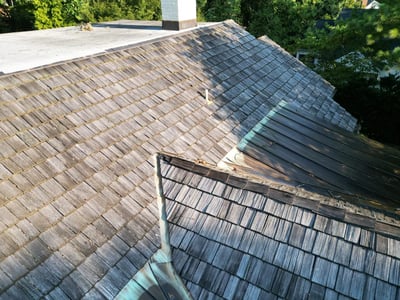
Wood shakes harken back to centuries-old traditions, showcasing handcrafted appeal. These wooden shingles offer a warm and rustic aesthetic, aging gracefully to achieve a weathered look that enhances the historic ambiance. Ceramic tiles, often associated with Mediterranean and Spanish architectural styles, provide an elegant and distinctive appearance. Their enduring nature and wide range of colors ensure compatibility with various historical periods. Slate tiles, esteemed for their longevity and classic appearance, were commonly used in the 19th century. Their innate elegance and exquisite texture make them a popular choice for maintaining historical accuracy.
The preservation of historic buildings involves a delicate balance between honoring the past and accommodating modern needs. As custodians of these architectural gems, homeowners must navigate the complex process of obtaining approval for renovation projects from relevant preservation authorities. Preservation guidelines are established to safeguard the unique character of heritage buildings and to ensure that any modifications maintain the historical narrative.
Obtaining the green light for a roof replacement often requires meticulous documentation, including detailed plans, material samples, and adherence to specific construction methods. Engaging with preservation experts and local historical commissions can provide invaluable guidance. While the process might be meticulous, adhering to preservation guidelines is not only a legal obligation but also a commitment to preserving the legacy for future generations.
The roof is a defining element of a historic home's exterior, contributing significantly to its overall aesthetics. The choice of roofing material can either seamlessly blend with the existing architecture or introduce an incongruous element. This decision holds the power to either enhance the historic charm or compromise it.
By opting for authentic materials, homeowners ensure that the visual continuity of their heritage homes remains intact. Wood shakes, ceramic tiles, and slate tiles each possess distinct textures, colors, and forms that resonate with specific historical periods. Integrating these materials harmoniously preserves the architectural authenticity that connects the present to the past.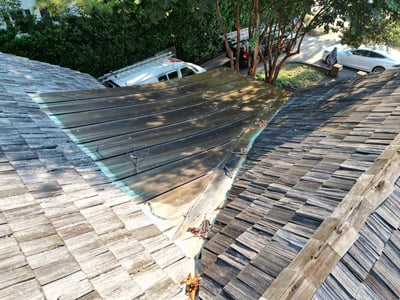
In contrast, choosing modern materials, while often more convenient, can disrupt the visual cohesion of the building. Synthetic alternatives may compromise the time-tested elegance of the structure, potentially diminishing its historical value.
Preserving the historic charm of a home isn't solely about aesthetics and authenticity; it also extends to making environmentally responsible choices. When contemplating roof replacements for heritage buildings, considering the environmental impact of the chosen materials is essential.
Opting for sustainable roofing materials can align with the principles of historic preservation while contributing to a greener future. For instance, wood shakes sourced from responsibly managed forests can be a renewable choice. Additionally, some slate and ceramic tiles are crafted using eco-friendly practices, reducing the carbon footprint associated with their production.
Balancing the preservation of history with contemporary sustainability considerations adds a layer of significance to the roof replacement process. By selecting materials that echo the past while embracing environmentally conscious options, homeowners can ensure that their actions today contribute positively to both the preservation of heritage and the protection of the planet.
When it comes to preserving the historic charm of a home through roof replacement, the choice of roofing company is paramount. While the focus often rests on the selection of authentic materials and adherence to preservation guidelines, the execution of the project is equally vital. Enlisting the services of a reputable and experienced roofing company can make all the difference in ensuring the integrity of the historic structure remains intact.
Heritage buildings possess distinct architectural features that require specialized knowledge and skills for roof replacements. Collaborating with a roofing company experienced in working with historic properties is essential. These professionals are well-versed in the nuances of heritage roofing, including intricate designs, materials, and techniques from different eras. Their expertise ensures that the replacement aligns seamlessly with the home's historical significance.
Experienced roofing companies are familiar with the labyrinth of preservation regulations that often surround historic buildings. They understand the importance of obtaining the necessary permits and approvals before commencing work. By entrusting the project to experts who are accustomed to dealing with preservation authorities, homeowners can avoid potential setbacks and ensure a smoother renovation process.
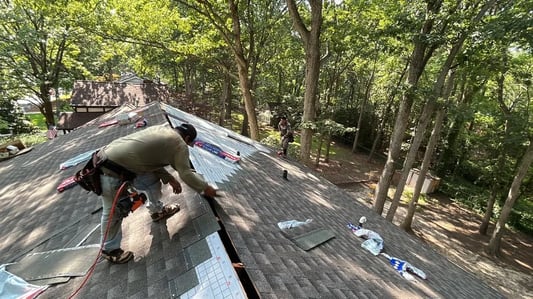
Quality workmanship is at the heart of preserving historic homes. Reputable roofing companies take pride in their craftsmanship and attention to detail. They understand the delicate balance between modern roofing techniques and the preservation of historical accuracy. From precise installation of materials to replicating intricate designs, experienced roofers contribute to maintaining the authenticity and charm of heritage buildings.
While aesthetics are a significant aspect of historic preservation, longevity is equally important. Replacing a historic roof is an investment that should last for decades. Established roofing companies prioritize using high-quality materials and techniques that ensure the new roof's durability. This commitment to excellence safeguards the home's structural integrity and minimizes the need for frequent repairs or replacements.
When selecting a roofing company for a historic property, don't hesitate to request client references and portfolios of past heritage projects. Reputable companies will gladly provide examples of their work and connect you with satisfied clients who can vouch for their expertise and professionalism. This step offers reassurance and confidence that your historic home is in capable hands.
In the endeavor to preserve historic charm, choosing the right roofing company is a crucial step. An experienced and dedicated team can elevate the roof replacement process from a mere renovation to a testament of respect for history. By collaborating with experts who understand the unique demands of heritage properties, homeowners ensure that the roof replacement journey aligns with the values of preservation and admiration for architectural legacy.
Roof replacement for historic homes is a nuanced process that requires careful consideration of historical accuracy, preservation guidelines, and architectural aesthetics. Each decision made contributes to the ongoing narrative of a building's past while ensuring its longevity for future generations. By selecting authentic materials, navigating preservation protocols, and preserving architectural aesthetics, homeowners become stewards of heritage, safeguarding the unique charm that defines these remarkable structures. In the realm of historic preservation, every roof replacement is a testament to the dedication to preserving the essence of the past.
On Tops Roofing has been working with Raleigh homeowners and organizations for roof replacements since 1991! Whatever your roof requires, We’re on it!
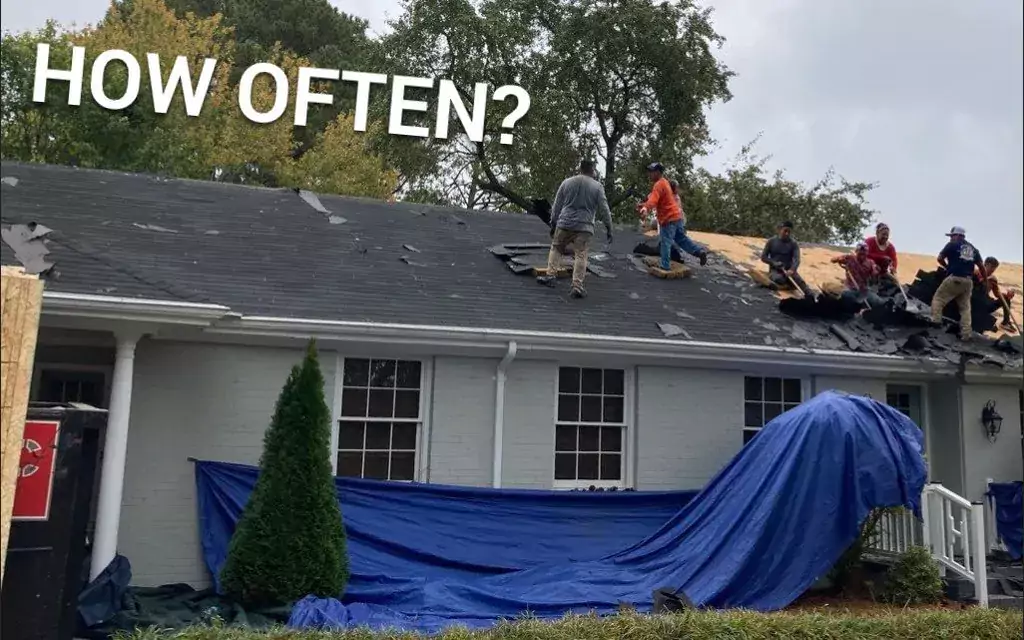
Roof replacements are an expensive, time consuming, major construction project that unfolds right on top of your home, potentially disrupting your...
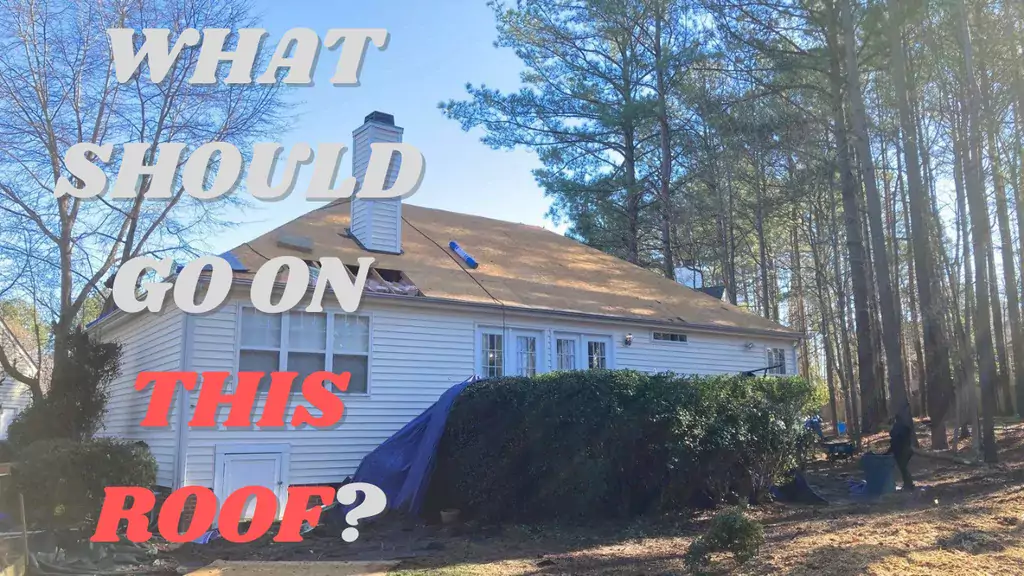
If you’ve already gotten underway in thinking about what you need to do for your roofing project, (and you’ve decided on getting a roof replacement)...
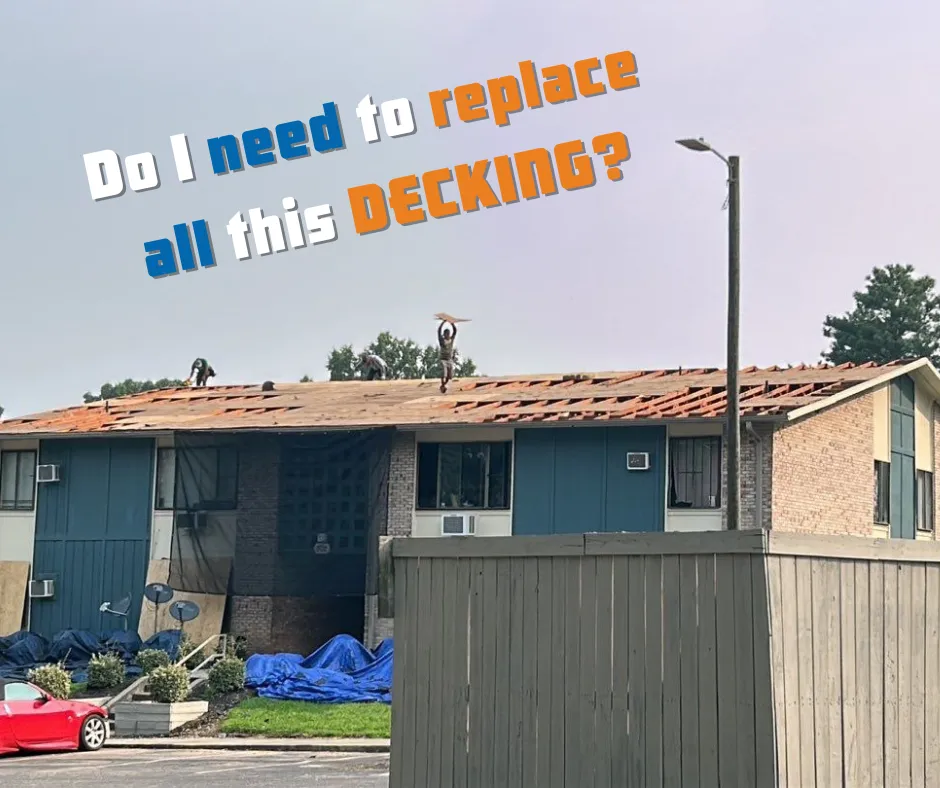
As a homeowner, it's important to understand the various components of your roof and when they may need attention or replacement. One critical...